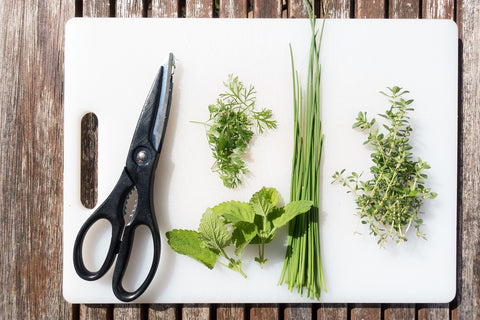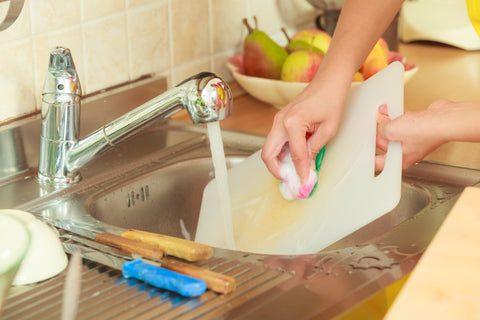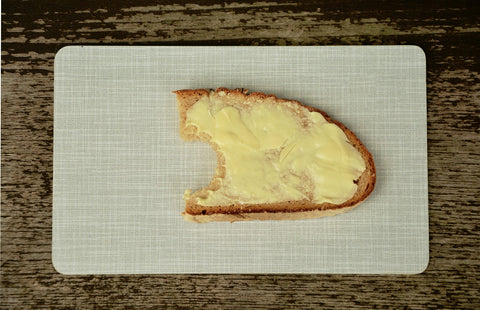Sanding Plastic Cutting Boards Don’t Have To Be Hard. Read These 5 Tips
Are you looking for a way to add some extra zing to your day? Maybe you need a new challenge to get you out of a creative rut. Here’s the solution: Try sanding your plastic cutting board! It may not sound glamorous, but trust us – it can be a lot of fun.

Image by Stefan Schweihofer from Pixabay
Five Cool Tips For Sanding The Plastic Cutting Board:
- Opt for sanding only as a last resort; if bleach or other cleaning solutions redeem the cutting board, go for them instead.
- Begin sanding with coarse sandpaper and finish with a finer one.
- Ensure that the surface has been uniformly sanded all over.
- Make sure the cutting board is smooth after the sanding process.
- After the sanding is over, thoroughly clean the cutting board.
Sanding your cutting board is not something that you do every day. And the best part is that it’s really easy to do. Just follow these simple instructions, and you’ll be on your way to having a beautiful, shiny cutting board in no time.
- Why Would You Sand A Cutting Board?
A cutting board is one of the most important tools in the kitchen. It provides a safe, stable surface for chopping and slicing food. However, over time, a cutting board can become worn and damaged. One way to renew a cutting board is to sand it down. This will remove any scratches or nicks on the surface, giving the board a smooth finish.
Sanding also helps to revitalize the wood, restoring its natural color and grain. In addition, sanding will remove the hiding spots of bacteria, eliminating their foothold. As a result, sanding is a vital step in maintaining a cutting board.
- What Kind of Cutting Boards Can Be Sanded?
When it comes to cutting boards, a few different materials can be sanded. The most common type of cutting board is made from wood, which can usually be sanded without any problems. However, plastic cutting boards can also be sanded, although it’s essential to use fine-grit sandpaper so that you don’t end up with scratches. The only exemption is a glass cutting board which cannot be sanded.
- What Kind of Sand Paper is Suitable for Cutting Boards?
When sanding cutting boards, there are a few things to remember. First, you’ll want to start with a coarse grit sandpaper, such as 120-grit, and work your way up to a finer grit, such as 320-grit. This will ensure that you get a smooth, even finish.
Second, be sure to sand the entire cutting board, not just the damaged or scratched areas. This will help to prevent further damage down the road.

Image by Anetlanda from Depositphotos
Finally, when you’re finished sanding, be sure to thoroughly clean the cutting board with a damp cloth to remove any specks or dust.
By following these simple tips, you can keep your cutting board looking new for years to come.
- How To Sand A Wooden Cutting Board?
A wooden cutting board is preferred in any kitchen, but it can quickly become stained and damaged with prolonged use. Sanding is a quick and easy way to refresh a cutting board and prolong its lifespan.
To sand a wooden cutting board, start disinfecting it with vinegar, salt, and lemon. This will kill any bacteria that may be lurking on the surface.
Next, start with coarse sandpaper and work your way up to fine sandpaper. Sand in the direction of the grain to avoid damaging the wood.
Once the cutting board is smooth, seal and protect the surface by moisturizing it with coconut oil and beeswax. Coconut oil helps to keep the board from drying out and cracking, while beeswax provides a barrier against water and stains.
With a bit of care and attention, a wooden cutting board can last for years.
- How to Sand A Plastic Cutting Board?
A plastic cutting board is a great kitchen tool that can be used for a variety of tasks, from chopping vegetables to slicing meat. But over time, even the best cutting boards can become stained and scratched. Fortunately, sanding comes to your rescue like no other, as the simple process can help to restore its appearance.

Image by congerdesign from Pixabay
To sand a plastic cutting board, start by cleaning it with diluted bleach or running it through the dishwasher. Then, use coarse sandpaper to remove any big scratches or stains. Once you’ve tackled the major imperfections, finish up with fine sandpaper, preferably using an orbital sander.
After sanding, clean the board thoroughly to remove any plastic shards. Isn’t it cool that you can revamp your cutting board with just a little effort?
- How Often Do I Have to Sand My Plastic Cutting Board?
The answer may surprise you.
Plastic cutting boards should only be sanded if they don’t become clean by handwashing or diluted bleach cleaning.
The time between sanding will vary depending on how often you use the board and the knives you use. If you have a lot of deep cuts in your board, then you’ll want to sand it more frequently.
You will also want to either sand or replace your plastic cutting board if it has too many deep grooves in it. Otherwise, you risk cross-contamination, which can make your family sick.
So how do you know when it’s time to sand? A good rule of thumb is to inspect your board after regular intervals and look for deep cuts or grooves. If the board is starting to look worn, it’s probably time for a new one.
So there you have it – everything you need to know about how often to sand your plastic cutting board. With just a little care, you can keep your board in tip-top shape for many years.
As any cook knows, a cutting board is an essential tool in the kitchen. Plastic cutting boards are popular because they’re inexpensive and easy to care for. However, now that you have mastered the art of sanding and know how to pep up your old cutting board, you no longer need to be bored and instead choose to spruce up your old cutting board.
Good luck!

